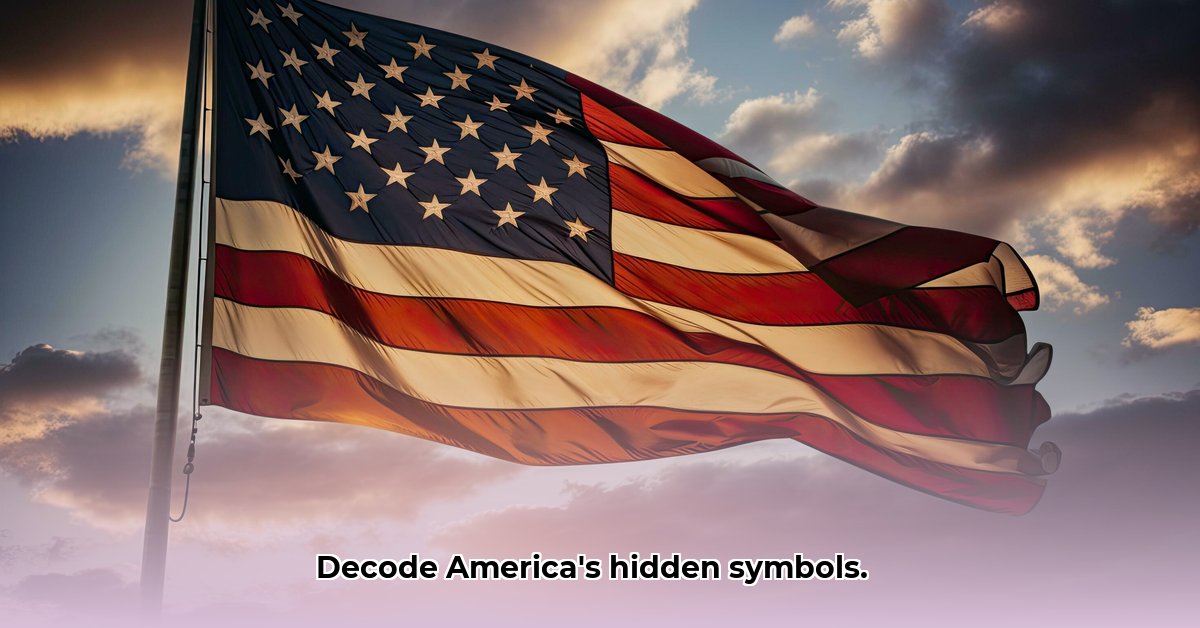Ever wonder what makes America, America? Is it just eagles, cowboys, and Lady Liberty? This isn’t your typical history lesson. We’re diving deep into how movies, ads, and even social media shape our idea of what it means to be American. For a deeper dive into the American spirit, check out this insightful article: American Spirit Meaning. We’ll look at the familiar symbols – the good, the bad, and the downright complicated. We’ll uncover the stories that usually get left out and see how a more complete picture can help us build a better future. Get ready to rethink those iconic images and what they really stand for.
American Spirit Symbolism in Media: Exploring Key Representations
What pops into your head when you think about America? For many, it’s a majestic bald eagle, symbolizing freedom; the red, white, and blue flag, representing patriotism and unity; or maybe a rugged cowboy, embodying independence and the Wild West spirit. These images are powerful, deeply ingrained in our culture. But is that the whole picture? Media often presents a simplified, even idealized, version of American identity, influencing cultural perceptions and shaping national symbolism.
Let’s dive deeper into those iconic symbols. The bald eagle, for example, wasn’t always our national bird. Its journey from near-extinction to a national symbol adds a layer of meaning. Conservation efforts helped restore the population, and now it represents not just American strength but also resilience and environmental stewardship. The bald eagle’s presence on currency and official seals reinforces its place in the national consciousness.
The cowboy, another cornerstone of our cultural imagery, is a more complicated symbol. The classic image often romanticizes frontier life while overlooking the harsh realities, complexities, and the diverse groups who helped shape the West. This includes the crucial contributions of Mexican vaqueros, African American cowboys, and Native American communities. These groups each had unique experiences and perspectives that the standard narrative often ignores. A more nuanced understanding is vital for evaluating American symbolism.
Even the American flag, usually a symbol of unity and freedom, can represent something quite different depending on the context. For some, it evokes patriotism and pride, while for others, it might symbolize injustice or oppression. Its meaning shifts based on individual experiences and the historical moment. Protests, political movements, and artistic expressions often incorporate the flag to convey diverse messages.
To truly understand how America is portrayed in media, we need to acknowledge the gaps and biases in the dominant stories. The “American Dream,” for instance, is often shown as achievable by everyone, overlooking the systematic inequalities that make it nearly impossible for many. This idealized version often overshadows the realities of poverty, discrimination, and lack of opportunity for certain groups. Historically, media often favored certain groups, leaving others out or presenting misleading portrayals. Early films often reinforced stereotypes, and news coverage might have focused disproportionately on certain communities.
So, how can we do better? By creating more inclusive representations in media. This means incorporating diverse viewpoints, challenging traditional images, and amplifying the voices of those often ignored. It’s about telling a more complete, nuanced story that reflects the richness and complexity of the American experience. This involves a concerted effort by several groups:
- Educators: They need to weave diverse perspectives into history lessons, moving beyond the usual simplified narratives, ensuring historical accuracy in media. This includes incorporating primary source documents, oral histories, and diverse historical accounts.
- Media Professionals: They have a responsibility to create content that accurately reflects the multifaceted nature of American history and identity; to move beyond stereotypes and clichés, requiring ethical media representation. This might involve consulting with cultural advisors and community members to ensure authentic portrayals.
- Policymakers: They can support initiatives promoting cultural understanding and inclusivity, ensuring a variety of voices are heard, pushing for policy changes for media diversity. This could include funding for diverse media projects and educational programs.
- The Public: We all need to develop stronger media literacy skills and engage in thoughtful conversations about the ways America is presented. We need to be critical consumers of media, questioning what we see and hear, developing critical media consumption habits. This involves seeking out diverse sources of information and engaging in discussions about media representations.
The future of how America’s spirit is shown in the media hinges on our willingness to examine ourselves critically. We must actively shape the stories we consume and create. It’s an ongoing process, requiring constant vigilance and a dedication to inclusivity. It’s a challenging but vital task.
How to Teach Inclusive American History Lessons: Reframing Narratives Through Media
Key Takeaways:
- Traditional US history often overlooks marginalized voices, creating an incomplete and biased understanding thereby promoting diverse historical accounts.
- Integrating material culture and inquiry-based learning creates more inclusive and accurate lessons that encourage interactive history education, improving learning outcomes.
- Curriculum redesign, teacher training, and community partnerships are crucial for effective change, ensuring comprehensive educational reform.
- Media representations of American identity are powerful tools for teaching inclusive history; analyzing these representations helps students critically examine dominant narratives and develop critical analysis skills in students.
Deconstructing the “American Dream”: Whose Dream Is It, Anyway?
We often see the “American Dream” depicted in media – a gleaming house, a happy family, economic success. But whose dream is this? How many versions of the “American Dream” exist? How to teach inclusive American history lessons requires us to challenge these singular narratives. Media, from early Hollywood films to contemporary television shows, constantly shapes our understanding of the past. It’s vital to critically examine these portrayals which can influence perception on the US history.
The Power of Visuals: Material Culture in the Classroom
Think about a simple object: a faded photograph, a worn tool, a letter. These tangible items offer a window into the past, a visceral connection to the lives of real people. This is the power of material culture. Integrating material culture into how to teach inclusive American history lessons allows students to interact directly with history. A Native American woven basket tells a different story than a colonial governor’s portrait. Both are part of the American story, yet one is often center stage while the other is relegated to the margins. A quilt made by formerly enslaved people, a migrant worker’s worn boots, or a suffragette’s banner can offer powerful insights that textbooks often miss.
Inquiry-Based Learning: Empowering Critical Thinking
Instead of simply presenting facts, how to teach inclusive American history lessons should focus on inquiry. Encourage students to ask questions, to investigate multiple perspectives, to analyze sources critically, and promote active learning methodologies. Provide them with diverse primary sources – not just textbooks, but also oral histories, personal accounts, letters, photographs, and artifacts. How did these different groups experience events? How do their stories challenge the accepted narrative? These questions are key to fostering critical thinking and creating a more informed, inclusive view of history. For example, instead of simply learning about the Civil Rights Movement from a textbook, students could analyze primary source documents like letters from civil rights activists, photographs of protests, and speeches by Martin Luther King Jr.
Beyond the Textbook: Utilizing Media in the Classroom
Media serves as a powerful resource for teaching inclusive history. Documentaries, films, and even television shows can provide engaging and accessible entry points into complex historical events using media as a teaching tool. However, we must approach these media representations critically. Consider the creator’s perspective, potential biases, and the intended audience. Examining the way media depicts various groups over time sheds light on evolving social attitudes and biases. Students can analyze how the portrayal of race, gender, and class has changed over time, fostering their ability to examine the messaging behind the narrative, which improves media literacy. For example, students could compare and contrast the portrayal of Native Americans in classic Western films with more recent documentaries that offer Native American perspectives.
Building Bridges Through Community Engagement
Bringing in community members to share their stories and perspectives is another essential element of inclusive history education, fostering community involvement in education. Local historians, museum curators, or even family members with personal accounts can enrich classroom learning. Partner with local museums and historical societies to access primary sources and relevant exhibitions. Such partnerships create an authentic and engaging learning experience, bringing the past to life and shaping a better understanding of history’s complexities.
Inclusive Representation in American Media Narratives: Promoting Diversity
Key Takeaways:
- The demand for authentic and diverse representation in American media is growing, increasing the importance of diverse storytelling.
- Harmful stereotypes and biased representations persist, requiring continued improvement and addressing media bias.
- Streaming platforms are increasingly investing in diverse storytellers and narratives, marking a shift in streaming content trends.
- A multifaceted approach is needed, addressing issues both in front of and behind the camera utilizing a holistic approach to media diversity.
The Shifting Landscape of American Identity
How do we, as Americans, see ourselves reflected in our movies, TV shows, and advertisements? For decades, the image projected often fell short of encompassing the rich tapestry of our nation’s diverse population. But the narrative is changing. The rise of inclusive representation in American media narratives is not merely a trend; it’s a fundamental shift in how we understand and portray American identity. Think about it: the stories we consume shape our perceptions of what’s normal, acceptable, and even possible.
From Stereotypes to Authenticity
Historically, minority groups were often relegated to stereotypical roles. These one-dimensional portrayals reinforced harmful biases and limited the possibilities for viewers from those communities, creating harmful stereotypes. But the tide is turning. Audiences are demanding more authentic and nuanced characters, seeking authentic character portrayal. We’re seeing a surge
- Shop Bento Box for Sale To Find Your Ideal Lunch Container - December 6, 2025
- Lunch Box That Fits Bento Box Neatly for Daily Use - December 5, 2025
- Japanese Lunch Bag Does Double Duty as Bento Carrier and Tote - December 4, 2025










